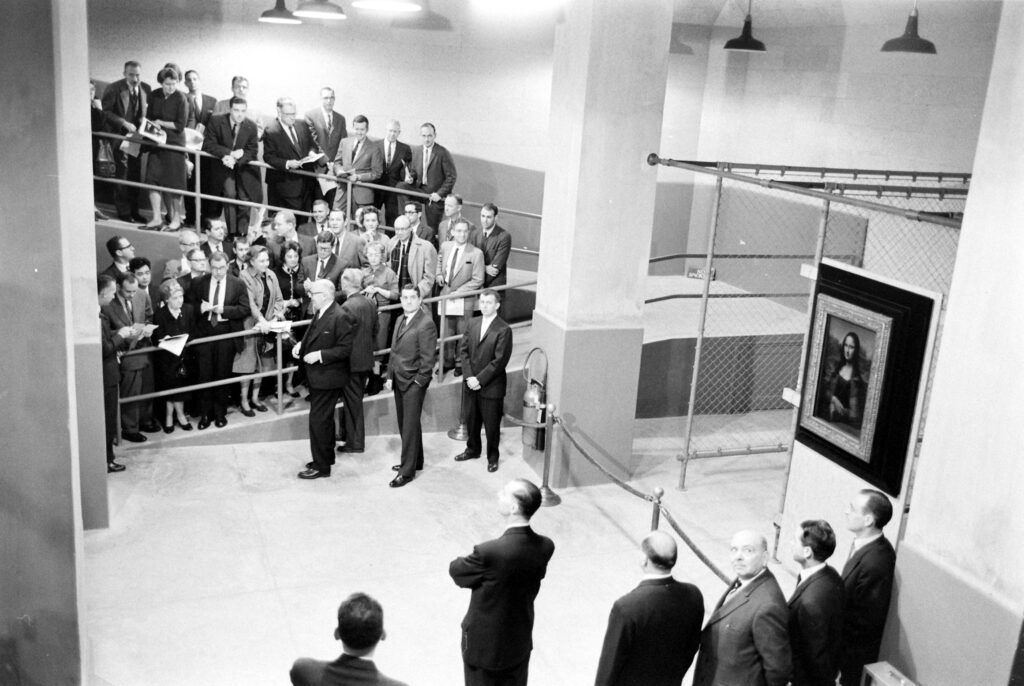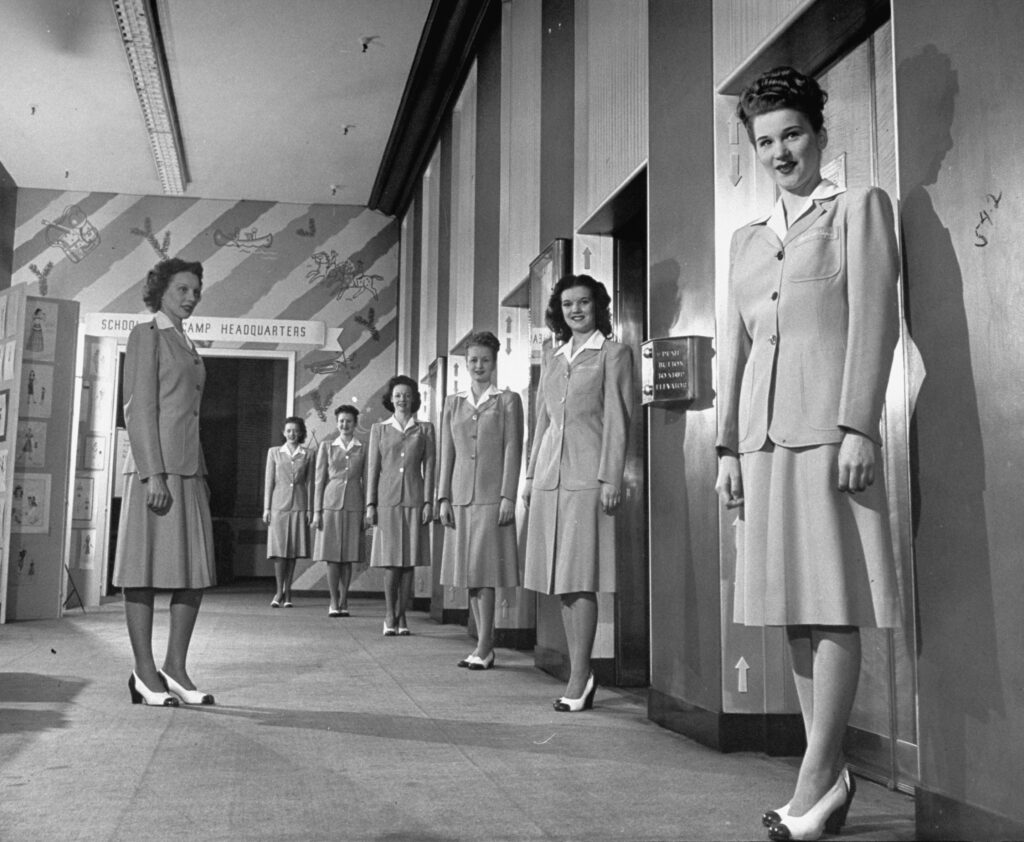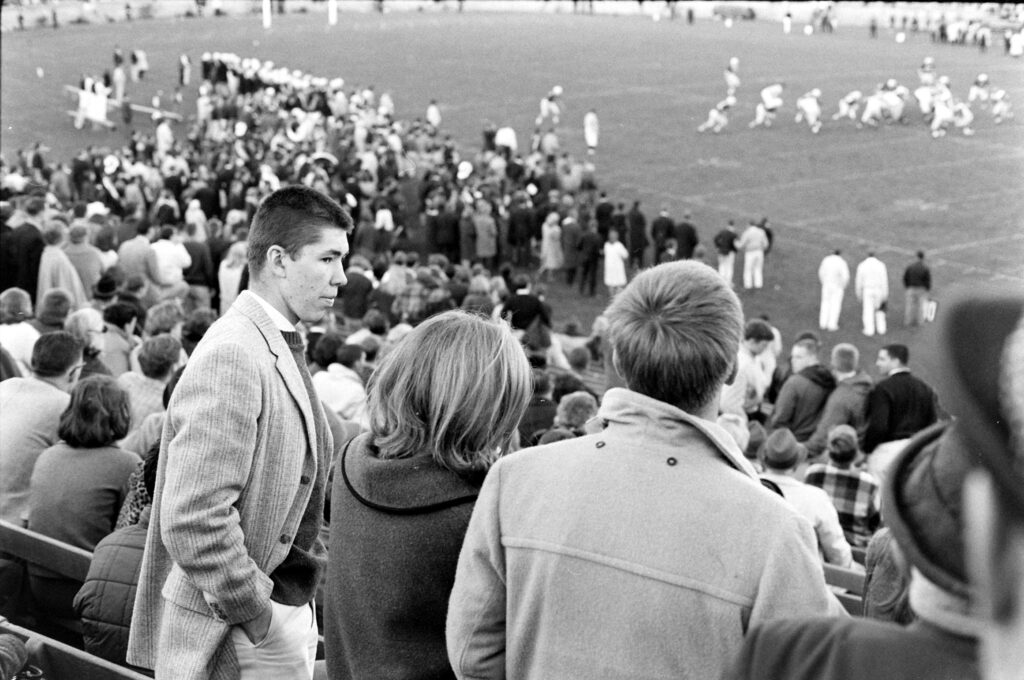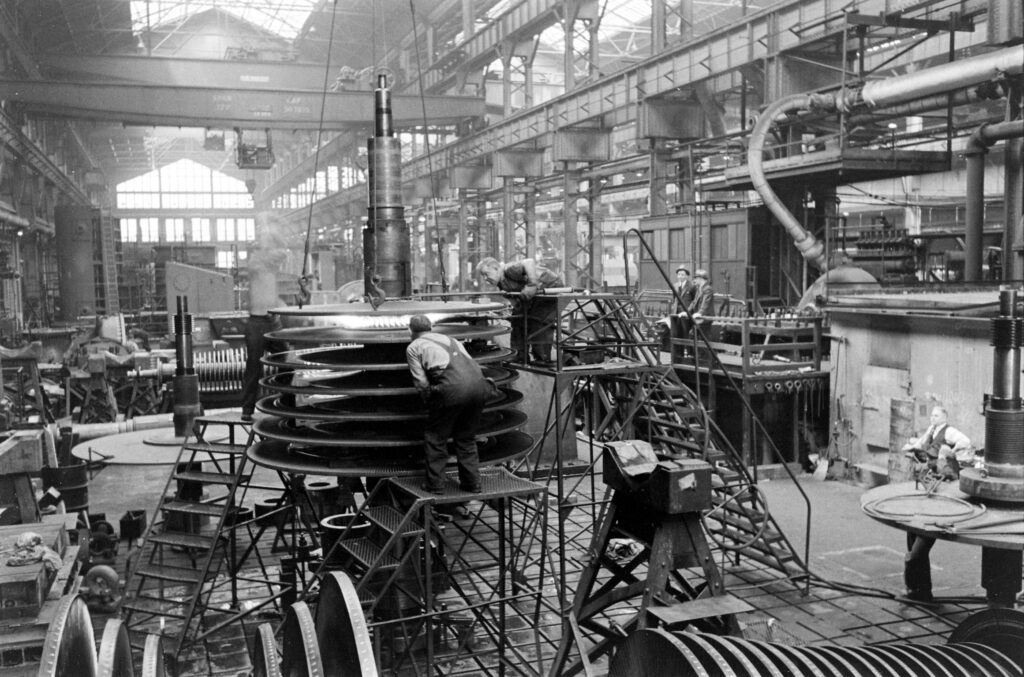Political campaigns are invariably about the candidates on the ballot that year, but the images that resulted when legendary LIFE photographer Alfred Eisenstaedt ventured to the Granite State in early 1952 capture something broader. Viewed 80-plus years down the road, they feel like a portrait of a different kind of public life.
Eisenstaedt captured political advocacy carried out face-to-face, and neighbor-to-neighbor, as people chatted up their favorite candidates, and did so in a manner that seems earnest but not angry. The only sign of extremism in these photos was of a man at a diner who refused to shave his beard until the country had a Republican president—and even he had a goofy grin on his face.
The notable absence in these photos is the crowds of media that are a staple of modern campaign coverage. Eisenstaedt took two portraits of men at typewriters—one was the founder of Yankee magazine and the other the publisher of a Concord newspaper—and that is the only press you see. There are no television cameras, no candidates mobbed by crowds of microphones, and obviously no one letting it rip on social media.
Of course politicians and their promises could still be exhausting. The image that leads this gallery features a man sitting in the front row, listening as a supporter makes a case for his candidate, Dwight. D. Eisenhower. The listener appears to be profoundly tired. It’s possible that he had simply come from a long day at work, but his expression seems to be that of a person who, as a resident of this small state that hosts a critical early primary every four years, had been hearing it from politicians all of his life.
Eisenhower was one of the two leading candidates on the Republican side in 1952. The other was Robert Taft, a powerful Senator from Ohio—perhaps the Taft-Hartley Act rings a bell from history class—and the son of former president William Taft. Going into the race Taft had been the favorite of the party’s conservatives.
Eisenhower beat Taft in New Hampshire, by a larger margin than expected. On the Democratic side, incumbent president Harry Truman took a surprising loss to Estes Kefauver, a Senator from Tennessee. LIFE, in its report in the magazine, noted that, “If the vote reflected the sentiment of the country, the American people are looking for new political faces.”
It turned out that the voters of 1952 did indeed want new faces. Soon after New Hampshire Truman withdrew from the race, which cleared a path for the eventual Democratic nominee, Adlai Stevenson. Eisenhower, meanwhile, rolled over Taft to capture the nomination, and then the presidency.
It’s why, all these years later, candidates still flock to New Hampshire, looking to stake an early claim.
If you want more vintage New Hampshire coverage, here’s a colorful look at Richard Nixon vs. George Romney, 1968.

A rally for Dwight Eisenhower during New Hampshire primary season, 1952.
Alfred Eisenstadt/Life Picture Collection/Shutterstock

A gathering during presidential primary season in Ossipee, New Hampshire, 1952.
Alfred Eisenstadt/Life Picture Collection/Shutterstock

Taft supporter Grace Sterling chatted up paper mill worker Quiddihy during the New Hampshire primary, 1952.
Alfred Eisenstadt/Life Picture Collection/Shutterstock

An Eisenhower supporter called on a neighbor during the presidential primary campaign in New Hampshire, 1952.
Alfred Eisenstadt/Life Picture Collection/Shutterstock

Grace Sterling fixed her brother-in-law’s tie that announced his support for Robert Taft during the 1952 New Hampshire primary.
Alfred Eisenstadt/Life Picture Collection/Shutterstock

David and Elizabeth Bradley visited their neighbor during the New Hampshire presidential primary campaign, New Hampshire, 1952.
Alfred Eisenstadt/Life Picture Collection/Shutterstock

New Hampshire primary season, 1952.
Alfred Eisenstadt/Life Picture Collection/Shutterstock

Harold Young, acting as campaign manager for Eisenhower in New Hampshire primary, 1952.
Alfred Eisenstadt/Life Picture Collection/Shutterstock

Locals left a town meeting on behalf of Republican candidate Dwight D. Eisenhower during the primary election campaign in Canterbury, New Hampshire, 1952.
Alfred Eisenstadt/Life Picture Collection/Shutterstock

Robb Hansell Sagendorph, founder of Yankee Magazine, during New Hampshire primary season, 1952.
Alfred Eisenstadt/Life Picture Collection/Shutterstock

James McLellan Langley of the Concord Monitor in New Hampshire, 1952.
Alfred Eisenstadt/Life Picture Collection/Shutterstock

Francis Grover Cleveland (left), the son of President Grover Cleveland, in New Hampshire during primary season, 1952. Cleveland, an actor, ran a theater in New Hampshire and served on a town board in Tamworth.
Alfred Eisenstadt/Life Picture Collection/Shutterstock

Samuel Marden vowed not to shave until there was a Republican president, New Hampshire, 1952.
Alfred Eisenstadt/Life Picture Collection/Shutterstock

Workers during the 1952 New Hampshire primary.
Alfred Eisenstadt/Life Picture Collection/Shutterstock

Election officials tallied returns in the New Hampshire primary, Concord, New Hampshire, 1952.
Alfred Eisenstadt/Life Picture Collection/Shutterstock

Women sat in the fire hall outside the polls during voting in the New Hampshire primary, 1952.
Alfred Eisenstadt/Life Picture Collection/Shutterstock

Republican presidential candidate Robert Taft in New Hampshire, days before he lost the primary to Dwight D. Eisenhower, 1952.
Alfred Eisenstadt/Life Picture Collection/Shutterstock

























